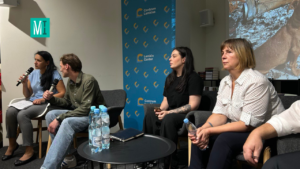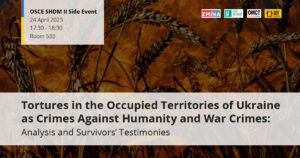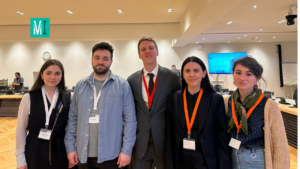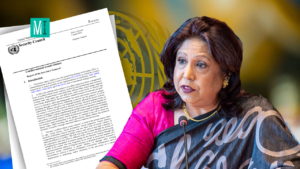Tortures of civilians and POWs: testimonies of the survivors. Summary of the meeting at the OSCE
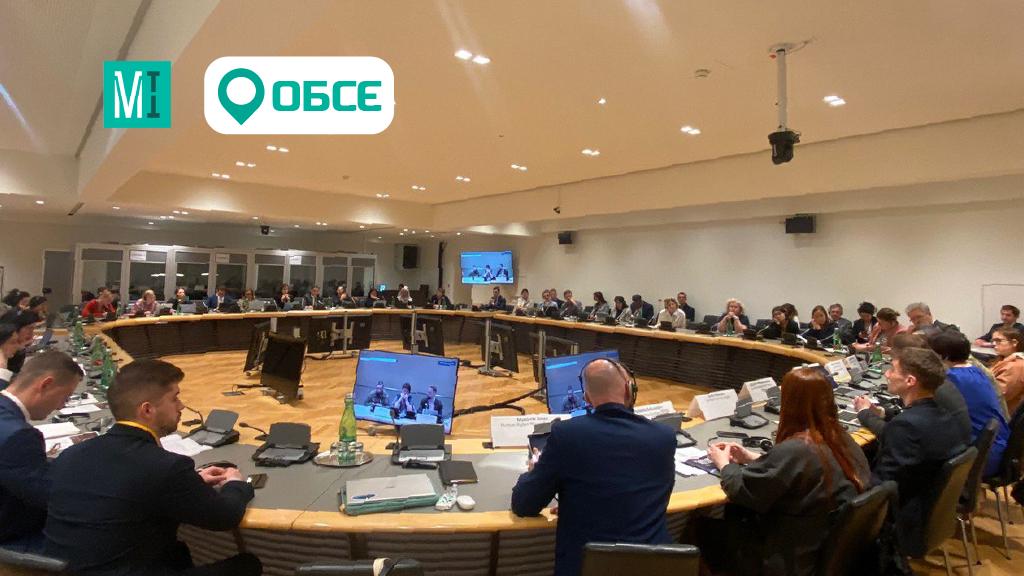
On April 24, the Media Initiative for Human Rights, Human Rights Centre ZMINA, World Organization Against Torture (OMCT), and Human Rights House Foundation held a side event under the ІІ Supplementary Human Dimension Meeting of the OSCE. The event’s topic was “Tortures in the occupied territories of Ukraine as crimes against humanity and war crimes: analysis and survivors’ testimonies.”
According to the data provided by MIHR, Russian armed troops systematically use torture and ill-treatment of Ukrainian civilians and POWs.
The Media Initiative for Human Rights representative, Stanislav Miroshnychenko, emphasized that, with the start of Russia’s full-scale invasion of Ukraine, the number of testimonies the MIHR has been receiving about tortures is growing exponentially. From the interviews of the military released from captivity, MIHR concludes that almost everybody taken captive by the Russians undergoes torture, irrespective of their gender.
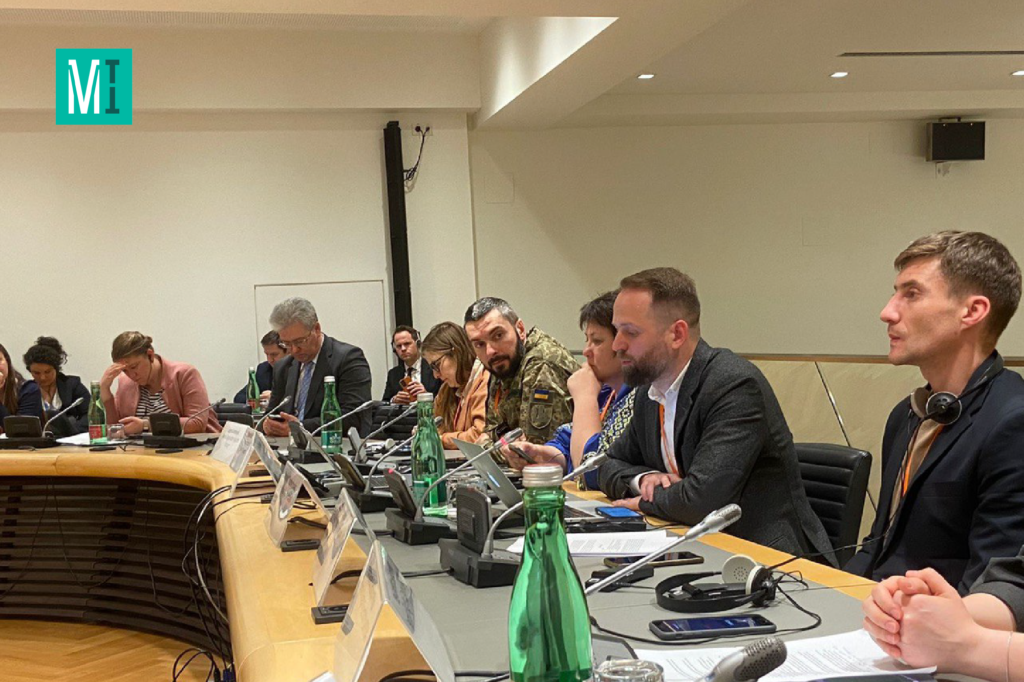
“We have recently created an interactive map of places where Ukrainians are held. There are more than 100 such places now, and they are only those we could identify. But we are sure that there are much more of them. The cruelest place where captives are held is Pre-Trial Detention Facility # 2 in Taganrog, from where, due to the testimonies, we record regular cases of our servicepersons’ deaths resulting from tortures and deprival of medical assistance. One of the types of torture in the same facility are cases when men are called out to an interrogation room and asked whether they have children. If a military says that he doesn’t, he is beaten on his genitals with the words: “For prevention of procreation.” And that has possible signs of genocide.
We have testimonies about attempts of suicide due to the torture, about a man who was raped in the Donetsk Pre-Trial Detention Facility and committed suicide. We have testimonies about the rapes of female POWs. A special type of psychological torture of women is when they shave their heads. Women take shower in the presence of male guards. We also have testimonies that the prisoners of war held in the Donetsk Pre-Trial Detention Facility, men and women, were stripped naked, had sacks put over their heads, and were taken to a bathhouse along the streets of Donetsk.
Voronezh Pre-Trial Detention Facility is also known for its cruelty. There they hound dogs on POWs, who tear pieces of flesh out of people’s bodies,” told Stanislav Miroshnychenko.
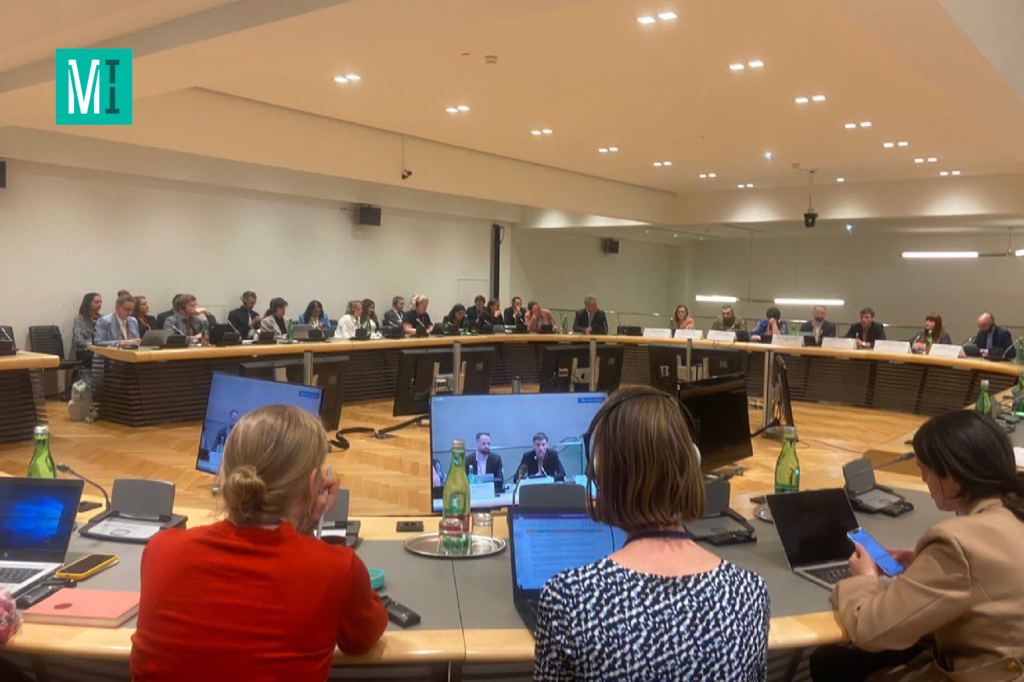
Yelyzaveta Sokurenko from the Human Rights Centre ZMINA noted that the data of the in-depth interviews with the torture victims and witnesses show that Russians mostly act based on the clear scenario.
“Victims were illegally detained for a few days to several months. The analysis showed that 83% of survivors reported being subjected to the most severe torture during interrogations. Tortures were aimed to obtain information about the Ukrainian army or about other civilians disloyal to the occupation or at coercing cooperation with the Russian army. Torture methods, circumstances of torture, and deliberate inhumane conditions of detention are common across different regions and places of detention. 63% of survivors reported torture by electric shocks, 81% reported “professional” beatings, and 70% reported torture by starvation,” told Yelyzaveta Sokurenko.
Eugenia Andreyuk from the World Organization Against Torture (OMCT) emphasized that Russia’s actions include not only war crimes but also crimes against humanity. According to her, OMCT has prepared several recommendations.
“Firstly, it is necessary to have a list of all detained persons, especially civilians, because many of their relatives still do not know where these people are, and there is still no information about very many people. Therefore, all the member states of the OSCE are asked to exert maximum pressure and involve diplomatic channels to spread information about the detained persons. And the second key point is access. We ask everybody to press for access to detained persons and POWs in Russia. And we see that Ukraine provides proper access to all detained persons,” — Eugenia Andreyuk said.
During the event at the OSCE, the former hostages told what crimes were committed against them by Russians. Thus, Oksana Zayaryna, a resident of temporarily occupied Berdiansk (Zaporizhia Region) and a pro-Ukrainian activist, was taken by the occupants from her own house to a so-called “commandant’s office,” where she was tortured with electric current:
“Five military came into the room. One of them used moral pressure, yelling that I had to confess everything because I allegedly was a head of a terroristic organization related to our military and was allegedly recruited by the Security Service of Ukraine and the Main Intelligence Department. When I said that I did not have any connections with our military, they started threatening that I would come clean when they start beating my husband.
The Russian said that if I do not confess, I would be taken to the so-called DNR, where I would be sentenced to 20 years. Then they brought a device and asked if I know what it was. I said yes, I guess. They tied the wires to my feet and started switching on the current. The interrogation lasted about two hours. After that, they gave me 24 hours to recall everything I knew. We stayed seven days in that “commandant’s office.” That is a horrible place because they torture people there round o’clock.”
Serhiy Pohorelov, a survivor from Kyiv Region, said that Russians had been hiding behind him and other hostages during battles with the Ukrainian military.
“We came to a forest, were taken out of armored vehicles, and told to walk along a mined road to check whether it was indeed mined. The Russian military were walking 50 meters behind us. I praise God that there were no mines. Then we were put onto the roof of an armored vehicle, and they drove towards a logistical center in the direction of Makariv. That all took place on Kyiv-Zhytomyr road, the so-called “highway of death.” On the other side of the road was a checkpoint of the Ukrainian military, who were guarding that territory. A colonel of the Russian army ordered his subordinates (a sniper, a grenadier, and a machine gunner) to open fire on our military. Shots and explosions started, and bullets ricocheted from asphalt and the nearby building, lasting 10–15 minutes. But our military heroically repelled their offensive. The Russian military thanked us that we served as their human shield during the assault on the positions of the Armed Forces of Ukraine,” recalled Serhiy Pohorelov.
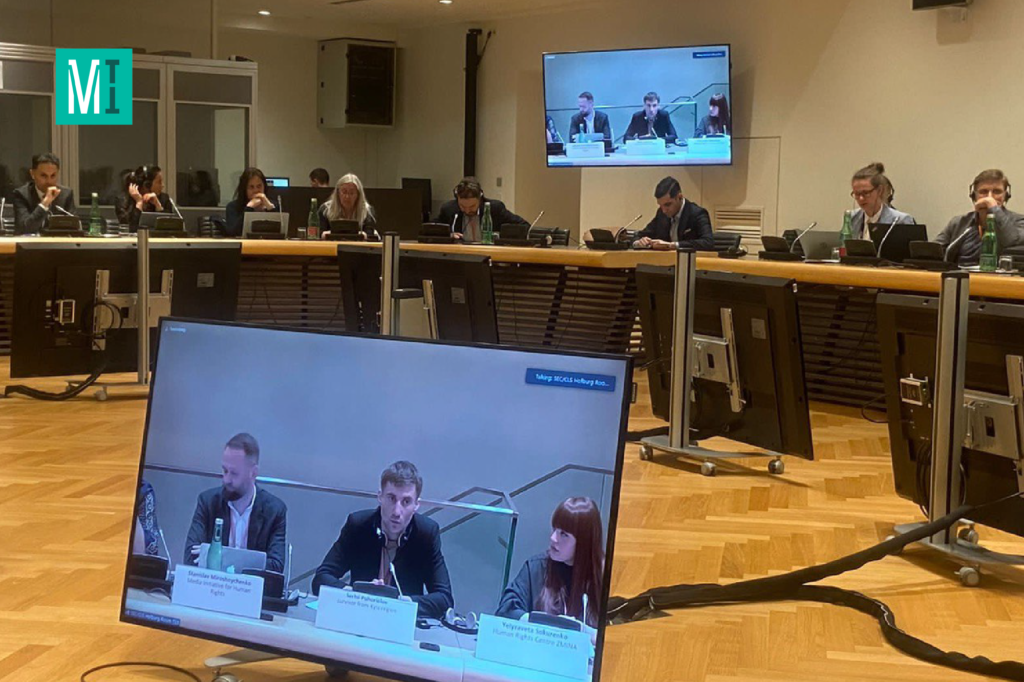
Ukrainian Military Maksym Kolesnikov was taken captive in March of 2022, where he stayed for more than ten months, during which he underwent torture by Russians:
“During the first five months, my fellow prisoners and I were beaten and tortured daily. We were punched, kicked, and beaten with rubber batons, plastic pipes, with metal rules on our hands, ropes with knots on them. We were electrocuted with various types of stun guns. We were beaten with our clothes on and naked; we were beaten in the chamber, in the corridor, in the shower, and in the courtyard. We were forced to squat 200–300 times and then to do 100 push-ups. And those who could no longer do that were beaten with a stun gun in order to “get recharged,” as they were saying. Some of us were hounded by dogs, some of us got shot in their hands during the interrogations. Some were beaten to death: in our prison in Novozybkov, a little town in the Briansk Region of Russia, they regularly buried the captives.
We were beaten before and after the interrogations. Our officers had especially hard time: they were constantly harassed and tortured before each interrogation, even after months in captivity. A mortar man was beaten heavily. They tried to make him confess that he had allegedly shelled residential houses with civilians therein. Close to midsummer, the beatings got less frequent when we were recognized as prisoners of war,” shared Maksym Kolesnikov.
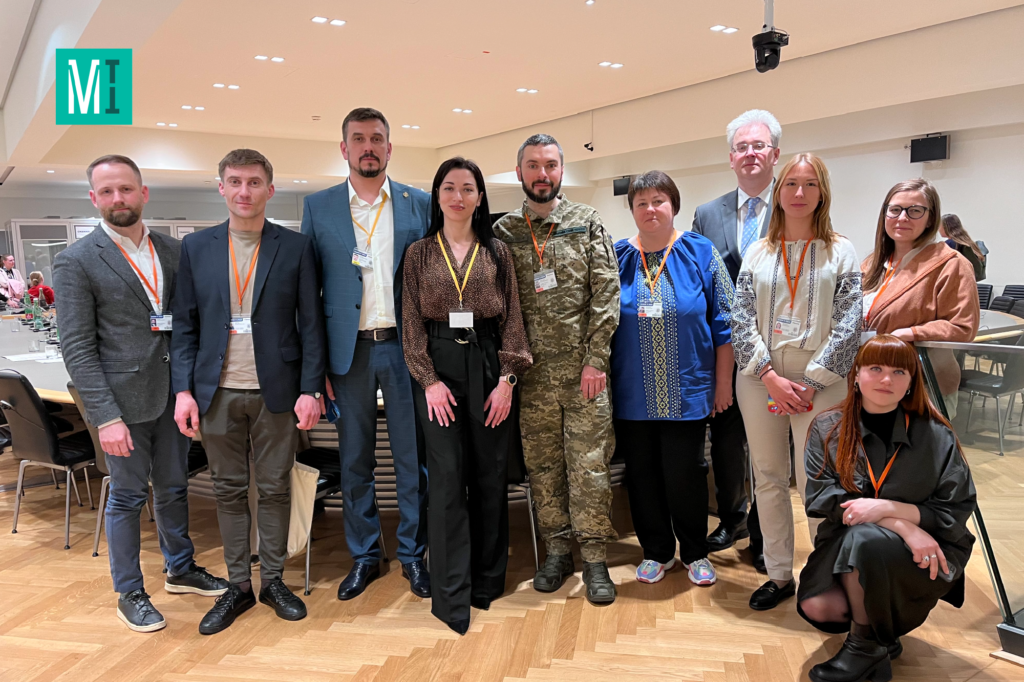
According to Stanislav Miroshnychenko, the key problems related to the captives include controlling the places and conditions of their detention. Only the International Committee of the Red Cross can officially confirm the status of captives. But MIHR hears from the military released from captivity that, during their imprisonment, they saw neither the ICRC’s representatives nor the UN’s representatives. Currently, MIHR is completing the list of the military who stay in captivity and are gravely wounded or sick, mostly persons with amputated limbs. We will soon provide the list to the ICRC with the requirement to visit those prisoners of war, to confirm their place of detention, and to seek the release of those people.
In Russia, they also start mass court judgments of Ukrainian captives. Therefore, Mr. Miroshnychenko called the OSCE to attend such sessions to receive access to our POWs and record their testimonies about the torture and inhumane treatment.
Translated from Ukrainian by Olena Balatska


